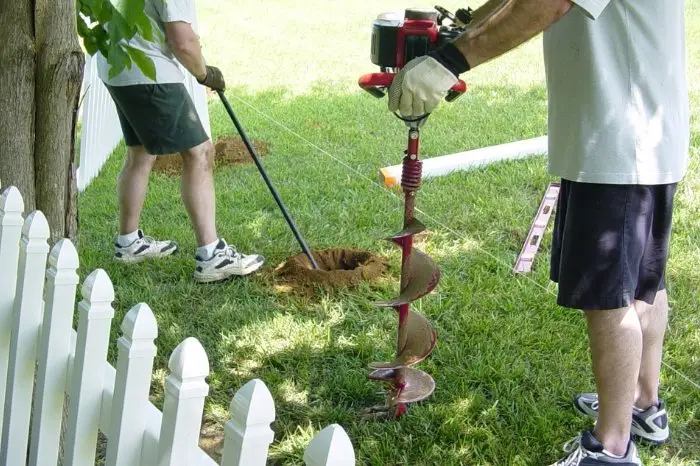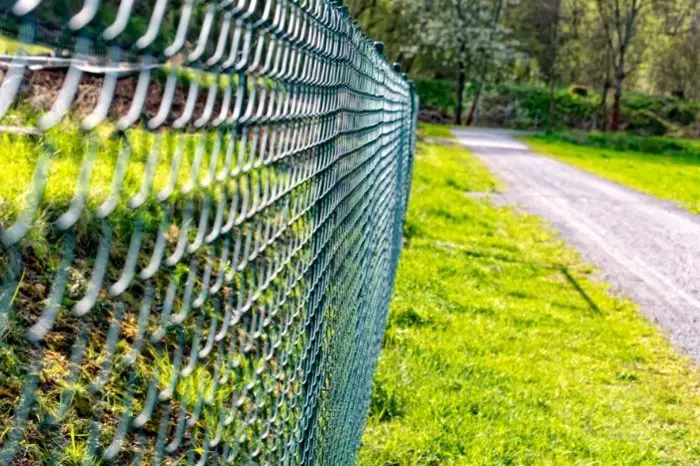Last Updated on December 24, 2021
Are you planning a new field layout for your horses? Perhaps you want to divide your paddocks into smaller sections, but aren’t sure where to start? When planning a fencing project you need to think about many things, including how tall a horse fence should be.
We’ve got all the top horse fencing construction tips for you, and we’ll find out the best types of fencing for horses. Let’s take a look into how to build a horse fence and how tall it should be!
How Easy Is Building A Tall Fence For Horses?
Building a tall fence for horses is a simple task that most DIY enthusiasts will be able to complete! However, this can be tough work, and the fence must be built securely to avoid breakages. You don’t want a fence that falls over as soon as a horse leans on it!
If you think that building a tall fence for horses is going to be too difficult, a local tradesperson should be able to easily complete this job. Alternatively, you can build a simple fencing system by using electric fencing tape.

How Low Should The Bottom Of A Horse Fence Be
Something that you also need to plan when building a horse fence is the height of the lowest part of the fence. Most types of fencing have some sort of gap at the bottom, and this should be carefully measured.
Firstly, you need to ensure that the gap is big enough to prevent the horse from trapping a hoof. A minimum gap of 8 inches should be sufficient.
If you have foals or very small ponies, they may be able to roll under a large gap at the bottom of the fence. To avoid this, ensure that the gap is a maximum of 12 inches.
You also need to think about other animals that may access the field, and whether you want to keep them out. A large gap at the bottom of the fence may allow dogs to enter the field – this may be a good thing or a bad thing, depending on your circumstances.
How Tall Does A Horse Fence Need To Be?
The recommended height for fencing for horses is 54 to 60 inches above ground level. This is the perfect height for average-sized horses, but obviously, not all horses are the same!
If you have a herd of small ponies then this fence height might be excessively high. On the other hand, if you’ve got tall warmbloods, they might find this an easy height of fence to jump over! So, is there a method to work out the height of a fence depending on the size of the horse?
A good guide is to make the top of the fence the same height as the horse’s withers. Most horses would struggle to jump over this height. This is also tall enough to stop the horse from flipping over the fence if he ran into it by accident.
You may find that larger horses, particularly stallions, need a very tall fence. A group of Shetland ponies will be kept secure with a smaller fence, but don’t underestimate the escaping capability of these tiny ponies!
Best Materials For Building A Tall Horse Fence
When it comes to building a horse fence, you will be overwhelmed with the choice of different fencing types! There is no right or wrong answer to the type of fencing that is best, as they all have different advantages and disadvantages.
You need to consider many factors, such as how much maintenance the fencing will require and how sturdy it will be if a horse runs into it. Good visibility is essential to prevent the horse from crashing into it by accident. It is also helpful if you can repair the fence yourself without having to call in a fencing contractor.
Here are some of the most commonly used types of fencing for horses:
-
Electric Fences
Advantages: Easy to install
Disadvantages: Expensive
-
Wire Fences
Advantages: Easy to install, inexpensive
Disadvantages: Low visibility, risk of entanglement
ElectroBraid PBRC1000C2-EB Horse Fence Conductor Reel, 1000-Feet, Checkered
-
Mesh Fences
Advantages: Durable, easy to install
Disadvantages: Low visibility
-
Pipe Fences
Advantages: Sturdy, highly visible, low maintenance
Disadvantages: High injury risk
-
Wood Rail Fences
Advantages: Highly visible, easy to install
Disadvantages: High maintenance
-
Vinyl Rail Fences
Advantages: Low maintenance, long lifespan, highly visible.
Disadvantages: Expensive, difficult to repair.
Check Out Best Boots For Barn Work – Our Favorites
Factors To Consider When Building A Horse Fence
When designing a horse fence, there are a few other things you need to consider:
- Keep gaps between rails or wires to a distance of 12 inches or less. This will prevent the horse from pushing his head through to reach the grass on the other side.
- A single strand of electric wire along the top of a fence can stop horses from leaning over and pushing on the fence.
- Rails and wire mesh should be fastened onto the same side of the fence as the horse. This will prevent the horse from pushing them out of their fasteners. It will also keep the horse safe from protruding nails.

- If your fence is not very visible, consider tying strips of plastic or cloth to the wire to increase visibility.
- Gaps in wire mesh can be hazardous, as horses may trap their hooves in them. Wire mesh holes should be 3 inches wide or less, and diamond shape is preferable to rectangular.
- Bracing bars at the corners and ends of the fence can help to strengthen the fencing and reduce the need for ongoing maintenance.
Summary – How High Should A Horse Fence Be
So, as we have learned, a fence for average-sized horses should be 54 to 60 inches tall. If your horse is much taller or smaller than average, then aim for a fence the same height as the horse’s withers. You should ensure that the bottom rail of your fence is between 8 and 12 inches high.
Do you have any questions about how to build a fence for your horses? Or maybe you’ve got a clever method for putting up a fence in a hurry – we’d love to hear from you if you do! Add a comment below this post and we’ll get back to you!

Kate Chalmers is a qualified veterinary nurse who has specialized in horse care for the vast majority of her career. She has been around horses since she was a child, starting out riding ponies and helping out at the local stables before going on to college to study Horse Care & Management. She has backed and trained many horses during her lifetime and competed in various equestrian sports at different levels.
After Kate qualified as a veterinary nurse, she provided nursing care to the patients of a large equine veterinary hospital for many years. She then went on to teach horse care and veterinary nursing at one of the top colleges in the country. This has led to an in-depth knowledge of the care needs of horses and their various medical ailments, as well as a life-long passion for educating horse owners on how to provide the best possible care for their four-legged friends.
Kate Chalmers BSc (Hons) CVN, Dip AVN (Equine) Dip HE CVN EVN VN A1 PGCE

